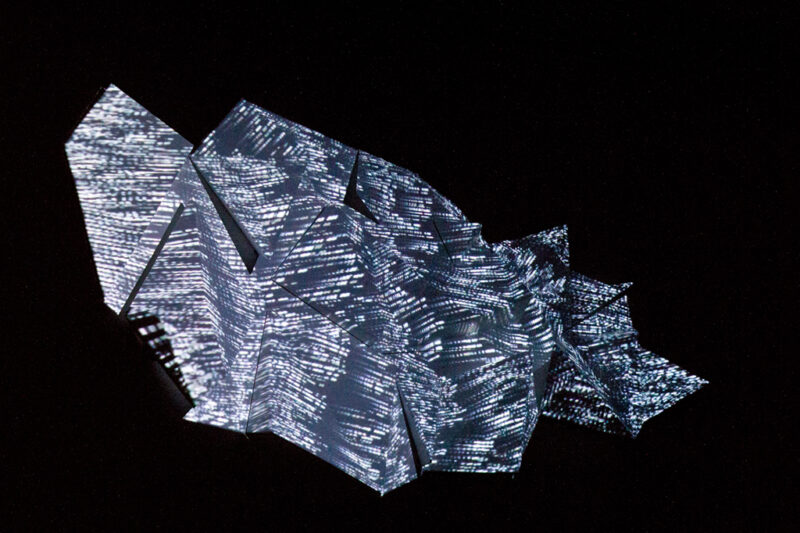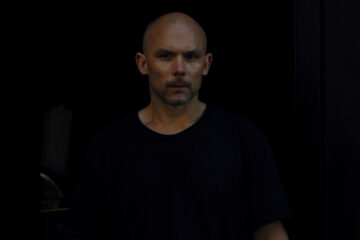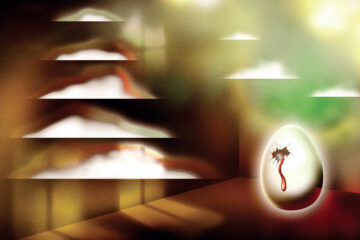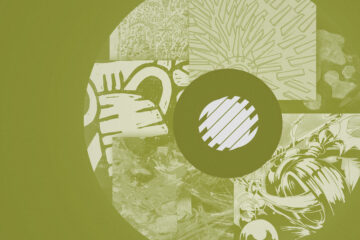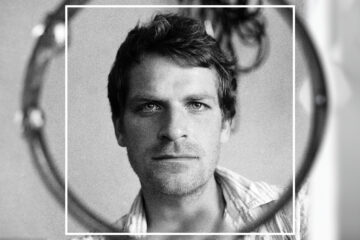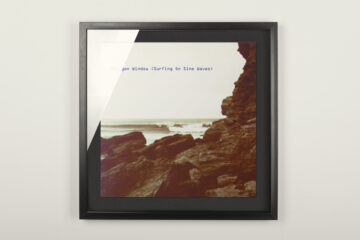You studied textiles and fashion but now you are decorating spaces rather than bodies. How does one relate to the other?
Florence To: I worked in tailoring and experimental pattern cutting, a lot of the productions I worked on were to create sculptural designs using the least amount of seams. When preparing fabric for cutting I would consider aspects that would affect the overall design such as how light reflected the chosen direction of the fabric and how this will look on the body. I still work in a similar process when designing for space. I began experimenting with shapes and measurements that had enough allowance to be repositioned in the desired space, progressing the ideas into different angles and surface texture.
How does architecture play into your work?
Florence To: How I coordinate the materials and technology together in the space is usually determined by the restrictions I look for in the space such as low ceilings, pillars and holes in the wall. I try to see what I can take out rather than what I put in. It isn’t just about designing a random idea, it has to make the space look purposeful.
How do you create a balance between pleasing the musician as well as the audience when you work?
Florence To: In the beginning I would try to make sure things where planned so we would both be happy about the performance however most of the performances I’ve worked on have been live straight up. I like to be organized but things seem to work better when I’m more spontaneous. Being immersed in the experience helps process the creativity. At the end of the day we are both generating a rhythm in sound and visual. The energy comes from the audience brought out by what they hear and see, I try to enhance it along with the music.
Do you always work with electronic music? What draws you toward it? Could you see yourself working with hip hop, jazz, accoustic?»How I coordinate the materials and technology together in the space is usually determined by the restrictions I look for in the space such as low ceilings, pillars and holes in the wall.«
Florence To
Florence To: I’m interested in all forms of music, the sound variations in electronic music seem to work with a visuals, which I guess is the field I became involved with when doing this full time. I worked on an interesting event earlier this year where I created an installation alongside poet/singer Jaap Blonk. He creates interesting vocal ranges and uses imaginative colloquialism in different languages from books of how he hears the writer’s voice. This got me curious on how to create visuals with that type of performance – it’s something I would like to spend time to develop. I come from a classical background so I would also love to work with an orchestra and choir. I’ve also been working on my own sounds to work with installation. There’s a sense of more control needed the more I work with other artists, however I never stop learning or wanting to try something different. Fashion and other product design has a huge aspect of functionality. What does functionality mean when designing an event?
Florence To: There are a lot of restrictions that happens last minute such as new information on the stage plan that is out with my control. This happens because of the lack of communication or miscommunication. This became a constant battle when working at some club nights so I wanted to come up with a solution so when it would happen again I’d be ready for it and would not need to compromise on the design. Working in this way has led me to find new ways to process my work. Restrictions are unpredictable and creates a direction which we may not have taken if everything was done our own way.
Synthesia translates sounds into shapes or colors. How do you translate music into shapes and colors? Rather mathematically or emotionally?
Florence To: When I began working on visuals I created a library of different frames that were collected from working on events with various types of music. I became familiar with the library and would remember each visual by the way they moved. In terms of rhythm, I would see how the visuals would move to frequency settings adjusted in x, y, z dimensions. It’s about having an impact on the senses complimenting each other. The maths wouldn’t be relevant if I couldn’t create something with an emotion.
Your work has a very digital language. What does your work process looks like? Are there also analogue elements present?
Florence To: It depends on the project, whether if it were to be an exhibit or an installation, for a music event or a special performance. I use a mixture of cinema 4d, illustrator and some times after effects. The installation design comes first so that will dictate the direction of the visuals. I think about how the first frame will look in a perspective and how shadows will create that depth. Most of the visuals are in their final development at the night of the production. I try to keep them as live as possible by using still frames. I’ve been using mainly digital applications to create the visuals, which I use for general music events. For special performances and collaborations with sound designers…it would be a mixture as there is more time spent on personal projects. However for the past month I’ve been doing a lot of filming for my new installation.
You come from a fashion background. Do you plan to work in this field?
Florence To: I wouldn’t reject the idea but at the moment I’m still developing installations and learning ways to work with space. I really enjoy the environment I work in and being able to work with music and performance. I don’t think it matters what you study, if you can be progressive with your skills in different mediums then that keeps you being creative and isn’t that what creativity is all about?

